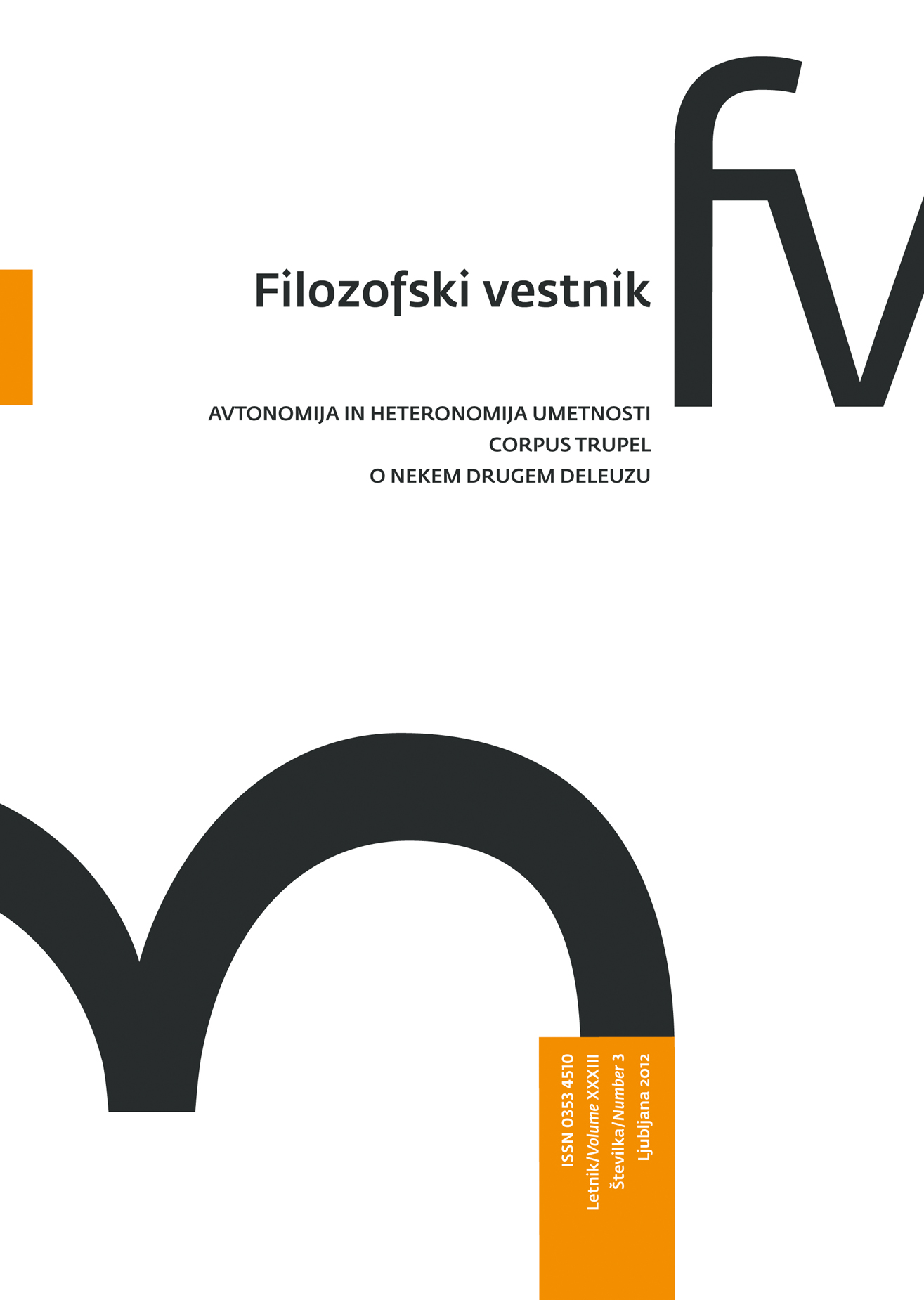Umetniška avtonomija in heteronomija
Ključne besede:
avantgardna umetnost, avtonomija, heteronomija, politična umetnost, instrumentalnostPovzetek
V članku avtor obravnava t. i. estetske (ali heteronomne umetniške) avantgarde, torej tiste, ki so v preteklem stoletju vztrajale pri zlitju umetnosti in »življenja«. Ukvarja se z enim prvih takih primerov, namreč ruskim konstruktivizmom, ki je bil večkrat (Benjamin H.D. Buchloh, Boris Groys, Jacques Rancière itd.) predmet tovrstne obravnave. Avtor z navedenimi pisci deli mnenje, da je v tovrstnih primerih uveljavljena »formacijska paradigma« (Buchloh) nezadostna, saj omejuje označbo modernizma le na njegov »zahodni« (avtonomistični) del. Avtor v članku v glavnem potrjuje Rancièrove trditve o tej temi, ob čemer pa opozori še na tretjo različico heteronomije, namreč ono, ki jo je razdelalo situacionistično gibanje.Prenosi
Podatki o prenosih še niso na voljo.
Prenosi
Objavljeno
2016-02-07
Kako citirati
Erjavec, A. (2016). Umetniška avtonomija in heteronomija. Filozofski Vestnik, 33(3). Pridobljeno od https://ojs.zrc-sazu.si/filozofski-vestnik/article/view/4190
Številka
Rubrike
Avtonomija in heteronomija umetnosti
Licenca
Avtorji jamčijo, da je delo njihova avtorska stvaritev, da v njem niso kršene avtorske pravice tretjih oseb ali kake druge pravice. V primeru zahtevkov tretjih oseb se avtorji zavezujejo, da bodo varovali interese založnika ter da bodo povrnili morebitno škodo.
Podrobneje v rubriki: Prispevki





